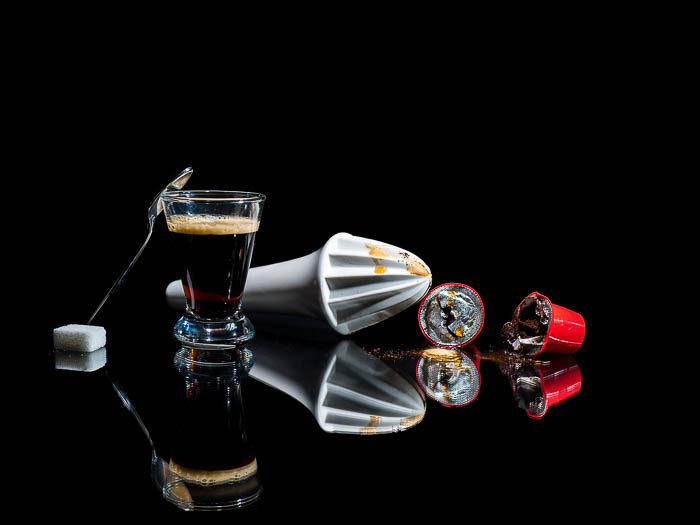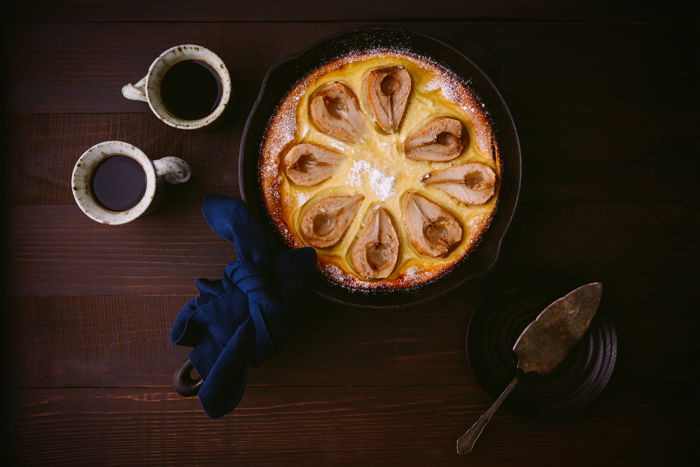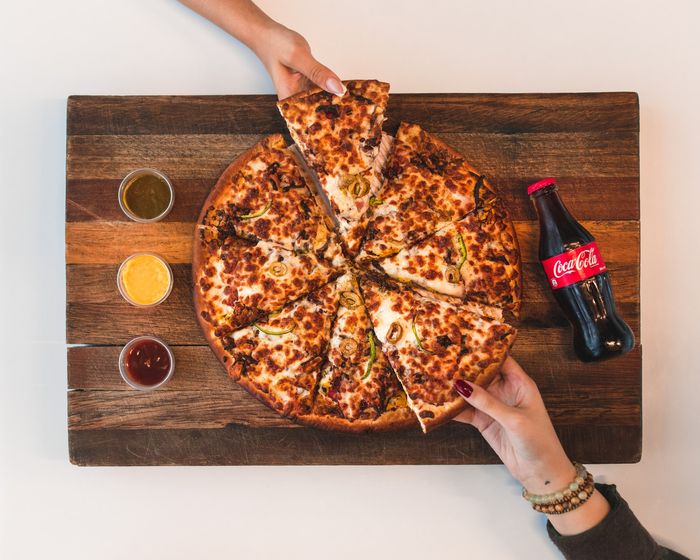Food Photography Styling Tools and How to Use Them
Food photography is all about capturing the beauty and flavor of food in a photograph. But to do that, you need to style your food correctly. Here are the tools you need for fabulous food photography styling.
Food Photography Styling: List of Items You Should Have in Your Kit
Tweezers
One of the most important tools in your arsenal, tweezers are crucial for strategically placing garnishes or nudging your food into exactly the right place.
The fingers are usually too inefficient for this. Aim to have at least two pairs ones with a short handle, as well as some long-handled ones. Keep them in your kit and only use them for food.
Cotton Swabs
Cotton swabs are perfect for cleaning up small drips and fingerprints or other marks on dishes and props.
Paper Towels
Besides being useful for wiping your hands and picking up spills, paper towels can be useful to prop up salads or placed hidden under dishes to protect your linens or surfaces.
Tea Towels
Put a couple of tea towels in your kit to periodically wipe your hands on as you work, or after you wash them. They’re also handy to spread on your work surface.
I use a tea towel to lay my styling tools out on, so I can keep them clean while conveniently having them on hand.
Paint Brushes
Have a variety of paint brushes ready to brush a bit of olive oil on meat or any unwanted crumbs off your set. A fan brush is particularly good for brushing off your surfaces.
Spend a bit more on good artist brushes. The bristles typically fall out of the the cheaper ones, which can annoyingly stick to your food.
Water Spritzers
Buy a few little water spritzer bottles to have on hand during shoots. You can buy empty travel bottles from the drug store. A spritz of water on produce can make it look freshly picked.
It can also give new life to certain food items when they start to look a little dry or lifeless. Different sizes will provide a different mist, so it’s good to have a few sizes.
Glycerine
Want those water droplets on the fruit to last? Spray it with a 50/50 mixture of glycerine and water. It will simulate water droplets but will not evaporate quickly like pure water will.
You can find glycerine in most drugstores in the beauty section.
Squeeze Bottles
Several squeeze bottles with different size openings are great to have when working with sauces for both savoury and sweet dishes.
They give you more control than a spoon or pouring the sauce from a small pitcher.
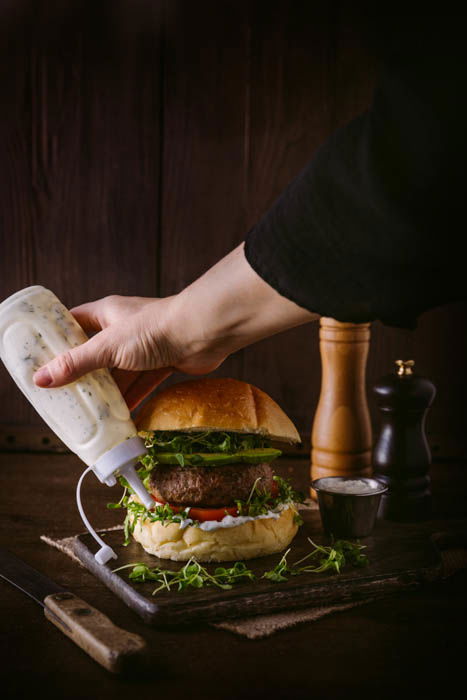
Glass Cleaner
Before plating food, give your props a good wipe down with glass cleaner to ensure they look as pristine as possible.
Fingerprints or smears of grease on dishes can be difficult and time-consuming to edit out.
Ascorbic Acid
Mixed with water, this powdered form of vitamin C will create a solution to soak fruits and vegetables in to keep them from oxidising and going brown.
Be sure to soak the items for at least fifteen minutes before you need them. A couple of spoons dissolved in one cup of water should do the trick.
I buy ascorbic acid at my local cook shop and it’s also sold in some countries under the brand name Fruit Fresh. If you can’t find ascorbic acid, you can get MSG from an Asian grocery store. It does the same thing.
Chopsticks
Besides being a necessary prop when shooting Asian food, chopsticks will help you adjust some larger items easier than tweezers can.
They can be particularly helpful when dealing with noodles.
Cooking Spray
Use for spraying onto certain food items like meat to make it gleam, or use it in cooking to prevent food from sticking to pans.
Some cooking sprays come in a butter flavor, which gives a nice golden color to baked goods.
Cooking Oil
Use olive oil or any other type of cooking oil to brush on meats, lettuce leaves, or other foods you want to strategically make glisten.
Food Colouring
Red food colouring mixed into water is a surprisingly good substitute for red wine, and a much cheaper one at that. Real red wine usually shoots too dark. You want your red “wine” to look somewhat transparent in photos.
Start with a few drops and then take a shot. Keep adding drops until you get a realistic color that you like. You don’t want it to look like juice!
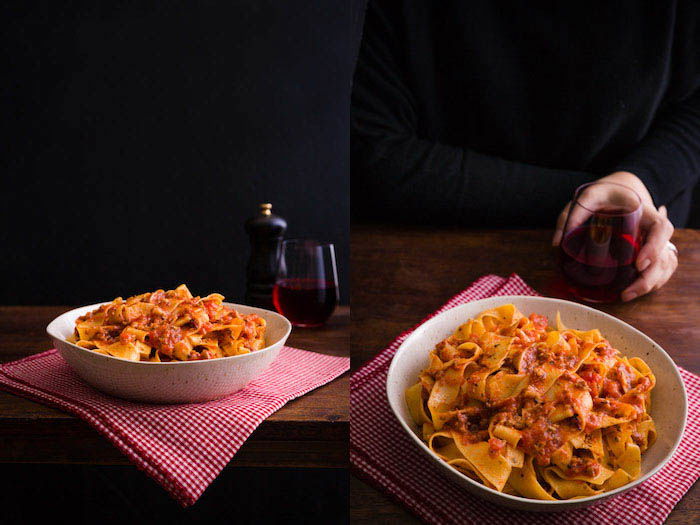
Kitchen Bouquet
This is a liquid seasoning product used to brown and flavor gravies and sauces. It can be brushed on poultry, toast, or other food items you would like to brown or make look golden.
A few drops mixed into water will also substitute well for white wine. Most countries sell a version of this product, but if you can’t find it, try using soy sauce instead.
Funnels
Having a couple of plastic funnels on hand will help you make smooth pours into glasses and bottles.
Splashes on the side of your glassware can look distracting and messy.
Small Bowls
A variety of small glass bowls are perfect for holding your garnishes, lemon wedges, and other bits of ingredients that you should have prepared and ready for shooting.
Small Spoons
Can be used to drizzle sauces or stir together ingredients in other liquids, like dressings. They do double duty as props alongside coffee or tea or certain desserts.
A Pastry Torch
A small kitchen torch such as those used by pastry chefs has a wide variety of uses and is a crucial item for browning food like poultry or pastries to make them look like they were just pulled from the oven.
Most of them are powered by butane and take a little bit of practice to use effectively. Make sure to bring the bottle of butane with you in case your torch runs out.
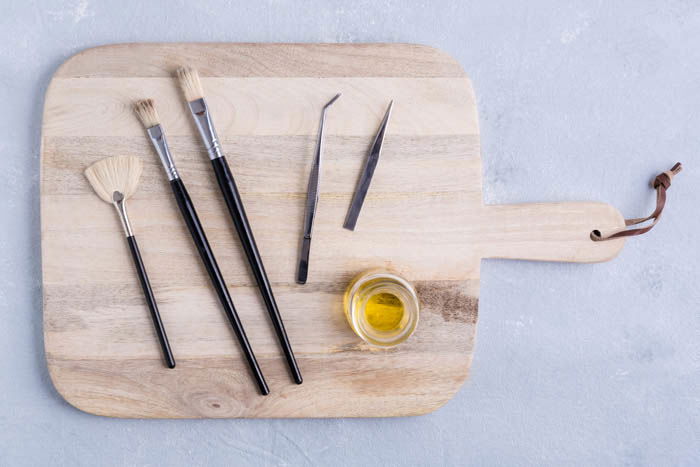
Syringes
Syringes can give you the control you need when applying mayonnaise or ketchup to the edge of a burger bun or sandwich.
Eye Droppers
Use eyedroppers to give you greater control when dabbing or dotting sauces or other liquids onto your plate.
Toothpicks
Toothpicks can help you anchor items together, especially with tall dishes like burgers or stacks of pancakes.
They can be hidden from view or edited out later in post-processing.
Baby Blocks
This may seem like a strange one, but I regularly use baby blocks to mark the position of certain items on my set.
If I move my dish to plate my food once my lights are set up, it can be difficult to put it back the exact way.
Mounting Putty
This is a sticky, rubbery product that looks like chewed up blue gum. It’s quite sticky and is also used to prop up smaller pieces of food that won’t stay where you want them.
Because the color is so bright, you need to be careful that it doesn’t show to the camera. It is also called Fun Tak and can be bought at stationary stores or on sites like Amazon.
Dulling Spray
Dulling Spray is a product you can spray on items like glassware and utensils to reduce the reflections and glare caused by shiny items. It’s sold under the brand name Kryon and can also be purchased on Amazon or found in craft stores.
It can be used on metal, glass, plastic and ceramic. It’s removable, but not safe to ingest, so I would not eat from any dishes or utensils that have come in contact with this spray.
If you can’t find Dulling Spray, an aerosol hairspray will work similarly, though not quite as well.
Offset Spatula
This type of spatula is very useful when styling desserts involving whipped cream, frosting, or even ice cream.
It can be used to reapply or smooth out icing or fill in any unwanted cracks.
Pastry Bag and Tips
Although you might not be decorating a cake, having a pastry bag and a few tips can be helpful to have on hand when you need to do a quick repair job on frosting.
Fake Ice
If you are doing any kind of professional photography involving beverages, you will need to get some fake ice both cubes and shards. Trengrove Studios in the US is a trusted source for high quality fake ice.
It’s expensive, but cheap fake ice will not look realistic. Once you invest in it, you’ll have it forever. Our article on food photography props will give you more tips on investing in your craft.
Conclusion
Depending on the job, you may not need all of these items in your food styling kit, but it’s best to be prepared so you can work as efficiently as possible. Food styling is about problem solving and thinking creatively on your feet.
Having the right tools at your disposal can go a long way in ensuring that your shoots are stress free and that you get the best out of your food subjects.
Now you have some great styling ideas, check out our article for tips on selling your food photography.

